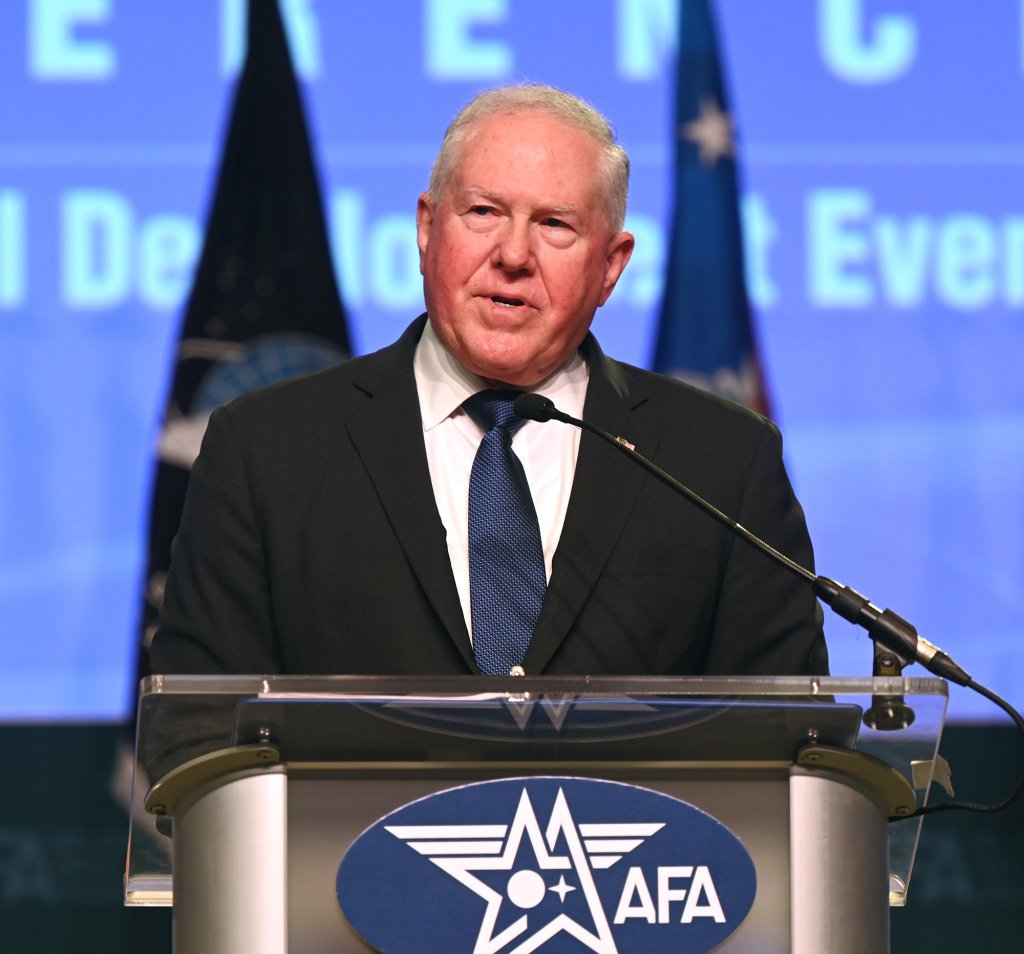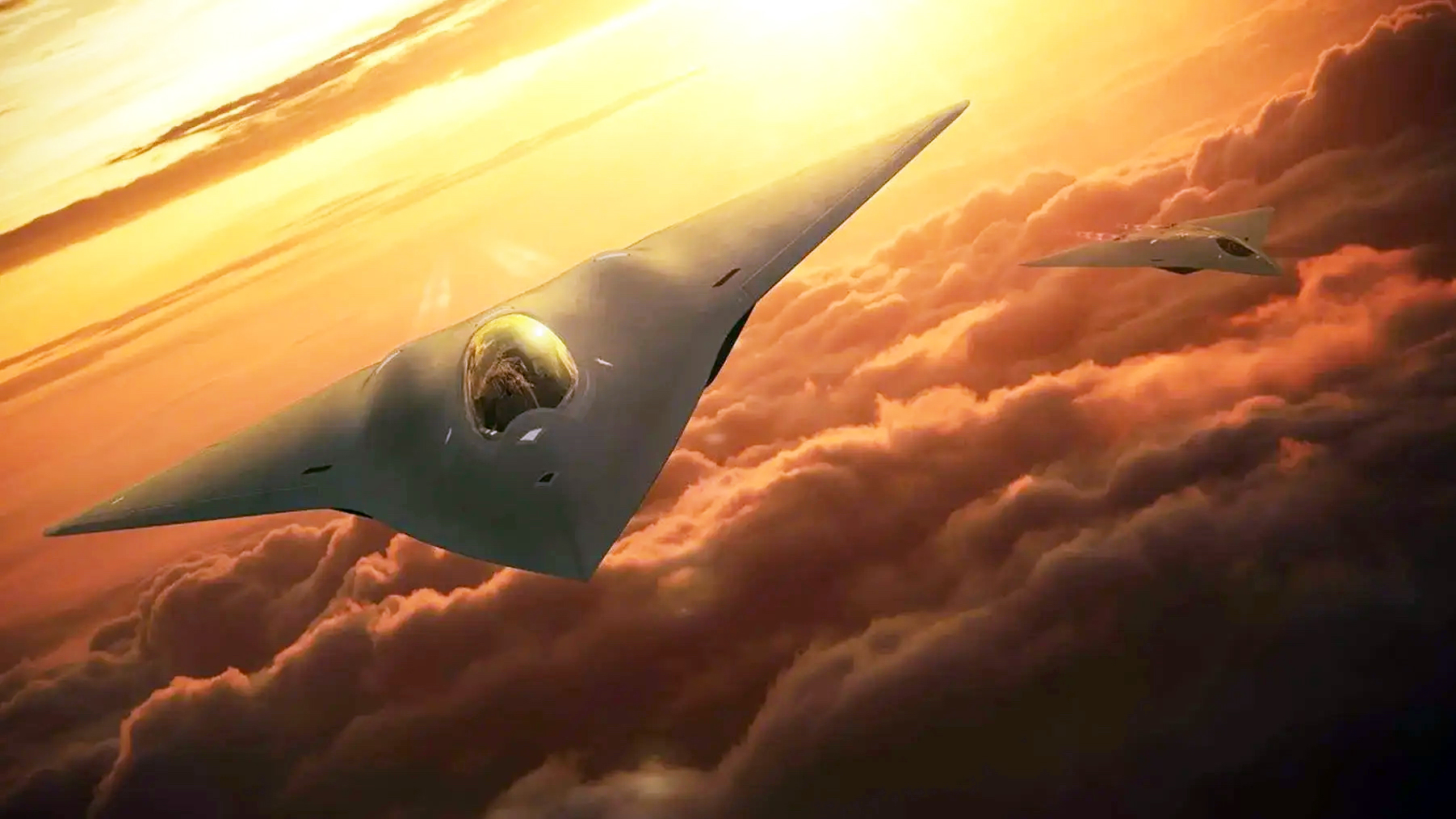A decision on the future of the U.S. Air Force’s high-stakes Next Generation Air Dominance (NGAD) initiative, which includes its crewed sixth-generation stealth combat jet, has been pushed to the incoming Trump administration. The move comes amid uncertainty about the Air Force’s ability to pay for NGAD, with a list of priority programs competing for funds, as well as its relevance in a future high-end combat scenario and who will be selected to build it, if it moves forward. Lockheed and Boeing are the two contractors still competing for the contract.
In a statement today, the Air Force said: “The Secretary of the Air Force will defer the Next Generation Air Dominance way-ahead decision to the next administration, while the Department of the Air Force continues its analysis and executes the necessary actions to ensure decision space remains intact for the NGAD program.” NGAD has been one of Air Force Secretary Frank Kendall’s major initiatives and his work prior to becoming secretary on a secretive program that resulted in a flying demonstrator for what would morph into the NGAD combat jet was key in moving the program forward.
The Air Force added that it is extending the current contracts for NGAD to “further mature designs/systems while ensuring the industry teams remain intact.” The service requests that the industry competitors “update their proposals to account for the delays resulting from the current pause (schedule/milestone update only).”
As noted earlier, Boeing and Lockheed Martin are competing for the contract to build the NGAD combat jet, but neither company has formally confirmed that. On the other hand, Northrop Grumman announced it had dropped out of the running voluntarily last year. The Air Force has said in the past that it hopes to begin fielding these new 6th generation stealth fighters before 2030.
Only last month, Kendall had questioned the affordability of the service’s big-ticket aircraft programs, which as well as new crewed fighters include advanced aerial refueling tankers and highly autonomous Collaborative Combat Aircraft (CCA) drones that are both linked directly to NGAD. Yet the crushing cost of rebuilding the USAF ICBM force is perhaps the largest driving financial factor that is impacting NGAD and other higher-priority programs.

In advance of today’s decision, the Air Force was already conducting a deep review of its NGAD plans, due to be completed before the end of the year. Kendall had so far been keen to emphasize that the future of the sixth-generation fighter is secure, with the focus now being on how next-generation tankers, CCAs, and different NGAD fighter designs could best be used together, and in what kind of mix.
“We are actually looking hard at the combination of the Next Generation Air Dominance platform, the Increment Two uncrewed Collaborative Combat Aircraft, and the Next Generation Aerial Refueling System, all in an Agile Combat Employment context,” Kendall said back in November.
“Right now, given our commitments, our resources, and strategic priorities, it’s hard for me to see how we can afford any combination of those new designs,” Kendall added.

With cost being the prime concern behind the current NGAD review, it’s likely to again be at the forefront when the Trump administration determines the future of the program.
Previously, it was assessed that each of NGAD’s sixth-generation crewed fighters would cost in the region of $300 million or more. Since then, however, Kendall has said he wants that to be reduced by two-thirds, bringing it more in line with a fifth-generation F-35 stealth fighter. It’s unclear how such a dramatic price drop could be achieved, but options might include reducing the number of missions the fighter takes on, as TWZ has discussed in the past.
There are potentially more radical alternatives, as well.
Earlier this year, an artificial intelligence-generated rendering of a notional light stealth fighter was included in a briefing by Chief of Staff of the Air Force Gen. David Allvin, the service’s top officer, something that was billed at the time as a thought exercise.

Allvin has since spoken about the possibility of the B-21 Raider stealth bomber taking on something closer to an ‘air dominance’ role depending on the outcome of the NGAD combat jet review. This is a topic TWZ has been discussing for years and the two programs — B-21 and NGAD — are already working loosely within each other’s orbits.
Then there is the option of tilting the NGAD program more in favor of uncrewed assets, chiefly the Collaborative Combat Aircraft (CCA), for which the NGAD fighter is expected to serve as a ‘quarterback.’
While far from clear how the CCAs will operate within the broader NGAD architecture, there are also questions about how many of the drones the Air Force plans to buy. Initially, the service said it wanted as many as 1,000 of those drones, and potentially more. Recently, the Air Force has talked about more modest numbers, broken down by increments, with Kendall saying that Increment 1 would involve around “100 [aircraft] on order or delivered” by the end of the decade.

How many more drones will eventually be acquired under subsequent increments remains unknown, but this is something that will also be closely tied to the future of the crewed fighter component. Around 200 NGAD fighters were originally said to have been the target force size.
At one point, NGAD’s status might have looked all but bulletproof, but developments in recent months have, for the first time, raised the very real prospect of the fighter component, at least, being significantly cut back or even canceled altogether.
One key player in the incoming Trump administration has already lambasted manned fighters as yesterday’s weapon. Elon Musk, who has been a strong proponent of advanced uncrewed air combat systems, recently lambasted the F-35. It is unlikely he would support an even more ambitious fighter program. And although he is not formally put in a place to make such decisions, he certainly has the next resident’s ear on all matters.
Ultimately, it’s far from unprecedented that the future of a major defense program like NGAD will be pushed from one outgoing administration to an incoming one. At the same time, it’s been clear for a while now that the Air Force will have to make some very tough decisions about its priority programs as it continues to wrestle with fiscal realities.
Contact the author: thomas@thewarzone.com
